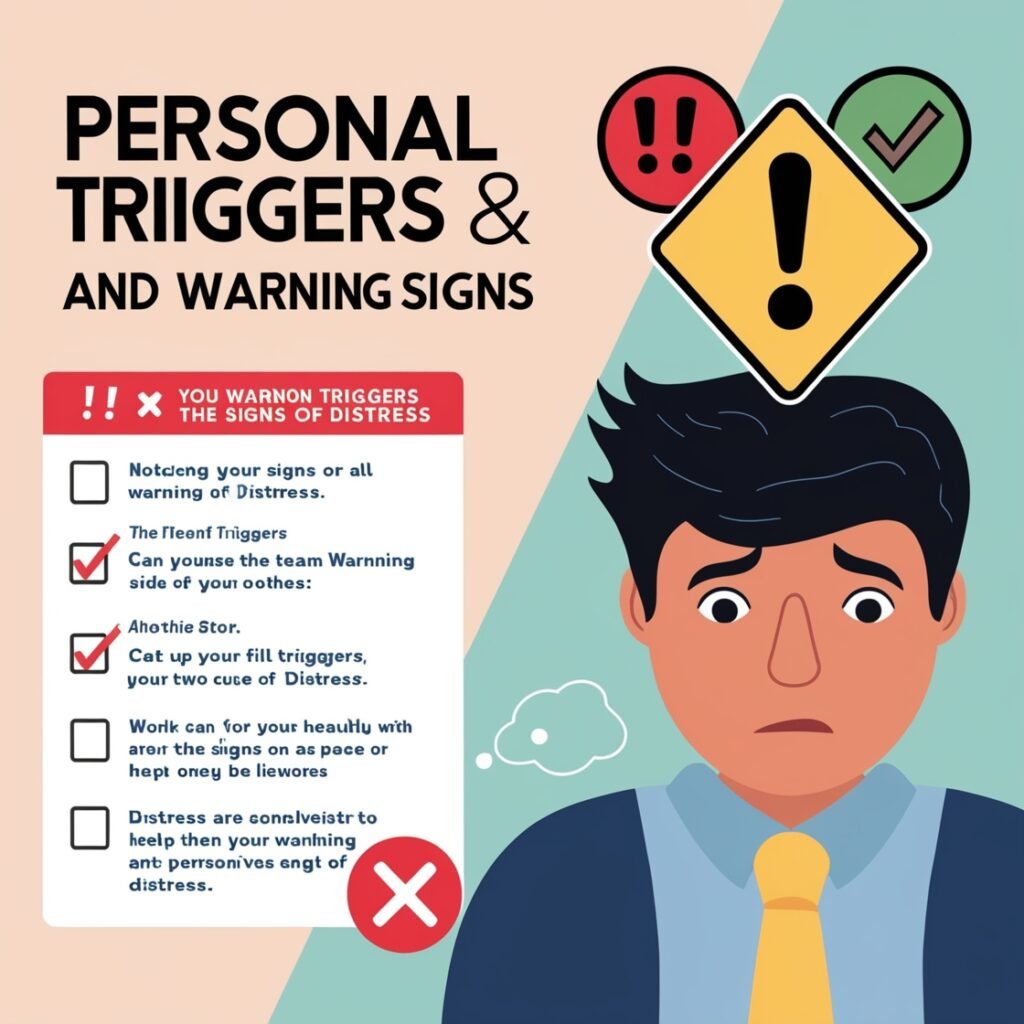Step 1: Understand the Importance of a Mental Health Emergency Plan
The Mental Health Emergency Plan is an important resource for anyone seeking to protect their health and safety when a mental breakdown occurs. Life takes a lot of unpredictable left and right turns, which is why it is essential we not only insure ourselves physically for emergencies but also invest in some kind of retirement plan mentally as well. It Makes It Easy for You To Identify What Your Triggers Are, Know The Early Warning Signs, And Simply Decide Quick Action Plan When In Crisis. A Mental Health Crisis Plan helps you stay in control of scenarios that might otherwise spiral out of it.
In this blog, I will go over how you can create a Mental Health Emergency Plan in five simple steps. Establish a Mental Health Safety Plan to unify your support network, detail coping strategies and write down your plan. An Emergency Mental Health Guide should be at your fingertips when things become overwhelming. Implementing all these things will make you ready for not just reacting since responding even in times of crisis is very important.
Step 2: Identify personal triggers and warning signs

The key component of a Mental Health Emergency Plan is knowing what makes you tick and the warning signals to prepare. Part of being prepared for mental health means knowing the incident or stressors that can lead to a crisis. If you understand what these triggers are, and spot them early on — then it makes sense to have the tools in your toolkit ready so that when they come around…you can manage before things spiral out of control. Knowing your triggers and what ur mind does in a stressful situation is an important element in protecting mental health during these emergencies.
The first step in how to deal with a mental health crisis is recognizing the early warning signs. This could be a shift in mood, sleep patterns, or behavior that suggests to you they may need help. By putting these in your Mental Health Emergency Plan, you can try to react as quickly and effectively the next time they show up. This mental health action plan should be a set of steps you can take to avoid your stress escalating into a full-blown crisis, for example: calling up someone trusted or practicing some relaxation techniques. So, be prepared in advance for managing your mental well-being to help you stay resilient during the challenging times.
Step 3: Find a network of support

Developing a powerful support network is essential when creating a Mental Health Emergency Plan. And these are the people you call up and lean on when your world is falling apart. Strategies for mental health crisis planning all involve figuring out who you know in your life who can step up as needed — whether that’s family, friends, or a professional. They could be an indispensable part of your Mental health crisis intervention plan giving you direction and support when the time comes.
Besides a support system, I also made sure that emergency mental health resources were always at hand. This could include details of therapists’ crisis hotlines, and local mental health services. Creating a mental health crisis plan is all about making these resources readily available, so you’re not searching for them in the heat of the moment. Having a support system in place — along with resources available to you when mental health crises arise — sets you up well for feeling sure of yourself and remaining grounded through it all.
Step 4: Develop a List of Coping Mechanisms and Supports
Copies of Your Mental Health Emergency Plan…your plan should be tailored to your issues, and specifically spell out what you need for identification during a crisis; think of it like having an allergy card but way more serious. This is having a deep understanding of what kind of techniques help you the most i.e., practice your pranayama or meditate for like 10 minutes, journal everything out, and so on. Include these strategies in your mental health emergency preparedness list, so you can easily access them when the need arises. Especially when you’re in a dark place having some simple tools learned can help you get back to ground zero.
Resource list — Alongside coping strategies, detail what resources there are for you available in a time of crisis. This could include your local mental health services, helplines or online support groups. We encourage mental health crisis planning by thinking ahead and making sure these resources are at hand. In addition to physical health techniques, your plan should also include social, and mental strategies, particularly involving reaching out via telephone or the internet for encouragement. A detailed mental health crisis plan enables you to start a timely yet effective response in an emergency.
Step 5: Review and update your mental health emergency plan regularly.
After creating your Mental Health Emergency Plan, you must document it. A crisis can then be a time when all needed steps, resources, and support strategies are directly available. For your Mental Health Emergency plan, One of the keys to planning for mental health emergencies is writing or typing a quick go-to list somewhere where you can quickly reference it, whether that be in your phone, notebook paper, or even digital file. Information should cover warning signs, to coping strategies, and a list of your people.
Upgrading and regularly reviewing your Mental Illness Emergency Plan is likewise essential. Your triggers, support system and coping methods will also likely change depending on where you are in life. Creating a mental health crisis plan Generating a comprehensive and children-centered family emergency response plan is only part. Get in the habit of reviewing your crisis mental health plan intermittently to make sure everything is up-to-date and still applicable. By taking action in this way, you will be able to respond more effectively and with greater confidence when a mental health crisis comes. By being organized and staying on track with your plan, you are working to safeguard step one of a healthy mind.
In summary: Action Your Mental Health Emergency Plan
As they say, Putting Your Mental Health Emergency Plan in Place is just the first step — keeping it there matters to your long-term mental health readiness. A well-defined mental health action plan helps you to better navigate through crises. Be sure your plan contains all the elements of mental health planning, such as setting early warning signs, coping methods, and emergency contacts This way you are prepared on ways of dealing with a mental health crisis as it arises.
Keeping your Mental Health Emergency Plan up to date makes sure that your mental health is looked after in emergencies. It may mean making periodic checks and updates to accommodate changes you encounter in your life or needs. If it is a health emergency that has mimicked anxiety, keep revising in your head that first aid for mental health techniques and continue to adapt whilst always being prepared. Practicing these behaviors regularly will help to keep your plan fresh, an available tool in the event you need it many have found that when first needing a safety plan initially — one does not remember exactly what is on their current version of this type of document). Just keep this in mind– the most important weapon to have against a mental health crisis with PTSD is an accurate, well-kept plan.






















